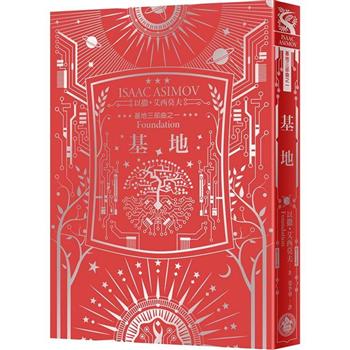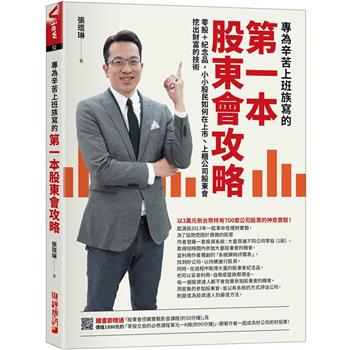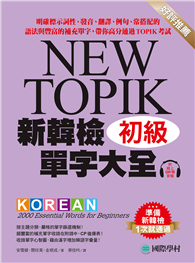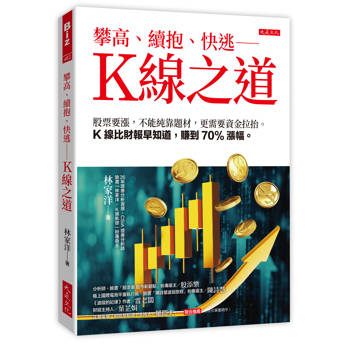| FindBook |
有 1 項符合
Managing Supply Chains on the Silk Road:Strategy, Performance, and Risk的圖書 |
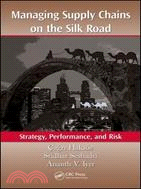 |
Managing Supply Chains on the Silk Road:Strategy, Performance, and Risk 作者:Haksoz,Cagri(EDT)/Seshadri,Sridhar(EDT)/Iyer,Ananth V.(EDT) 出版社:Taylor & Francis 出版日期:2011-12-21 語言:英文 規格:15.2 x 23.5 x 1.9 cm / 普通級/ 雙色印刷 |
| 圖書館借閱 |
| 國家圖書館 | 全國圖書書目資訊網 | 國立公共資訊圖書館 | 電子書服務平台 | MetaCat 跨館整合查詢 |
| 臺北市立圖書館 | 新北市立圖書館 | 基隆市公共圖書館 | 桃園市立圖書館 | 新竹縣公共圖書館 |
| 苗栗縣立圖書館 | 臺中市立圖書館 | 彰化縣公共圖書館 | 南投縣文化局 | 雲林縣公共圖書館 |
| 嘉義縣圖書館 | 臺南市立圖書館 | 高雄市立圖書館 | 屏東縣公共圖書館 | 宜蘭縣公共圖書館 |
| 花蓮縣文化局 | 臺東縣文化處 |
|
|
- 圖書簡介
Historically important trade routes for goods of all kinds for more than 3000 years, the Silk Road has once again come to prominence. Managing Supply Chains on the Silk Road: Strategy, Performance, and Risk present emerging supply chain practices from the Silk Road regions that include China, Hong Kong, India, Pakistan, Iran, Central Asia, Lebanon, Turkey, Israel, and Hungary. It takes a results-oriented, comparative approach to supply chain management covering structural, strategic, and operational topics.The book first presents how the historical Silk Road supply chains operated and then provides new and interesting examples from different countries the Silk Road passed, from China to Europe.The text demonstrates that the supply chain concept and its related practices are not new, per se, and invented recently in the West. Rather, it was practiced for centuries along the Silk Road and became the foundation for today’s global supply chains. Against this backdrop, the book explores the differences and similarities along the Silk Road in the supply chain management process and what can be learned from them. As supply chains become longer, leaner, and more scattered around the globe, performance and risk become two sides of a coin. Bringing together a diverse team of experts from academia and the business world, the book’s coverage spans not only regions, but industries. This fresh perspective provides insights for assessing performance and hedging risk and opens up new directions for research.
… Haksoz, Seshadri, and Iyer have brought together 28 scholars and business executives from different continents to share their perspectives about past and present trading activities along the Silk Road. … [the book] examines a wide range of issues arising from a multicultural perspective. … provides clear insights of the past and the present that will help academics and practitioners to gain a better understanding of the future.-From the foreword by Christopher Tang, University of California, Los Angeles - 作者簡介
Çagri Haksöz, is Assistant Professor of Operations Management at Sabanci School of Management, Sabanci University, Istanbul, Turkey. His current research focuses on risk management in global supply chains, design and management of options in supply chain contracts, strategic product recall management, pricing weather derivatives, and risk intelligence.
Sridhar Seshadri is Professor of Information, Risk, and Operations Management at McCombs School of Business, University of Texas, Austin. His current research focuses on equilibrium asset pricing, pricing and revenue optimization, and risk management in supply chains.
Ananth V. Iyer is Susan Bulkeley Butler Chair in Operations Management and Director, DCMME and GSCMI at the Krannert School of Business, Purdue University, West Lafayette, IN. His current research focuses on analysis of supply chains, including the modeling of spare parts supply chains, auto industry supply chains, the impact of promotions on logistics systems in the grocery industry, analysis of the impact of competitors on operational management models, and the role of supply contracts. - 目次
SUPPLY CHAIN STRATEGY ON THE SILK ROADSilk Road Supply Chains: A Historical Perspective; Çağrı Haksöz and Damla Durak UşarIntroduction to Silk Road Supply Chains: Trade and PlayersProducts and Services: Cost, Variety, VolumeSupply Chain Processes: From Procurement to SalesLead Times along the Silk Road Supply ChainsCareers on the Silk Road Supply ChainsManaging Risks along the Silk Road Supply ChainsThe Roles of Governments along the Silk RoadManaging Inter-Border and Inter-Cultural DifferencesConclusionAcknowledgementsReferencesEndnotes
The Silk Road Linking Artisans in India to Designers in Italy and World Markets; Ananth V. Iyer and Andrea LenternaIndian Artisans and Supply Chains A Different Way of Doing BusinessThe Value PropositionThe 2008 CollectionThe Flow of Goods from East to WestReferences
Logistics Management Insights from the Silk Road Geography; Ercan KorkutIntroductionThree BRIC Countries out of Four Are on the Silk Road: Can It Be Coincidence?Observations Over The Last Decade: What Has Changed?Hands-on Lessons and InsightsCountry Start-Up ChecklistConclusionEndnotes
Formal and Informal Financial Institutions and Entrepreneurship: The Case of Bazaars and Microfinance in Central Asia; Deniz TuraIntroductionOverview of the Bazaars and EntrepreneursRelationship between the Formal Institutions and the EntrepreneursRelationships between the Informal Institutions and the EntrepreneursConclusionReferencesEndnotes
Israel: A Start-Up Nation in a Global Supply Chain Context—The Revival of a Virtual Silk Road; Ehud MenipazIntroductionHistorySilk Road and International TradeEconomic and Business EcosystemsTransportation and Logistics EcosystemsEntrepreneurship and InnovationThe GEM ModelIsraeli Entrepreneurship in a Global ContextTechnology EcosystemSummaryAcknowledgementsReferencesEndnotes
Decoding Supply Chain Leadership in India; Janat Shah and Debabrata GhoshIntroductionSupply Chain Challenges in IndiaCharacteristics of Supply Chain Leaders in IndiaProblemsConclusionReferencesEndnotes
SUPPLY CHAIN PERFORMANCE ON THE SILK ROADBorusan Lojistik: Winning in the 3PL Market; Murat Kaya and Çağrı HaksözIntroductionBorusan LojistikTransportation ServicesWarehousing ServicesValue-Added ServicesThe Road Ahead for BLAcknowledgementsReferencesEndnotes
Crossdocking Insights from a Third Party Logistics Firm in Turkey; Gürdal ErtekIntroductionTypes of CrossdockingAppropriateness of CrossdockingPrerequisites of CrossdockingIndustries Where Crossdocking is AppliedBenefits and Drawbacks of CrossdockingImplementation of CrossdockingCase study: Ekol LojistikConclusionsAcknowledgementsReferencesEndnotes
Balance of Power between Buyer and Supplier: The Case of Chinese and Western Companies; Oliver Schneider, Robert Alard, Josef OehmenIntroduction: The Appeal of China and the Importance of Power in Buyer-Supplier RelationshipsResearch Method: Background to the Findings on the Balance of PowerFundamentals of Power in Buyer-Supplier RelationshipsExamples: Typical Developments of the Balance of PowerExplanation: Reasons for the Development of the Power SituationSuppliers’ Perspective: Perception of and Consequences for Chinese SuppliersTaking Action: Measures for an Ideal Development of the RelationshipTheoretical Implications and Limits of the StudyReferencesEndnotes
Outsourcing Design to Asia: ODM Practices; Qi Feng and Lauren Xiaoyuan LuIntroductionGrowing Trend of Outsourcing Design to AsiaDriving Factors of Design OutsourcingIssues and Challenges in Managing Design OutsourcingConclusionsReferences
Milk Collection at Nestle Pakistan Ltd.;Arif Iqbal Rana and Mohammad Kamran MumtazIntroductionPakistan and MilkStructure of Pakistan’s Dairy Sector Characteristics of Milk Production Systems in PakistanManagement Issues in Milk CollectionNew Milk Processing PlantsConclusions
The Role of Hungarian Railway on the New Silk Road; Paul LacourbeIntroduction of Hungarian State RailwaysHungary on the New Silk RoadModes of TransportationCurrent Financial Situation of MAVEU Investment in Hungarian InfrastructureChina's Investment in Hungarian InfrastructureAreas to Be Impacted By the New Silk RoadConclusionsEndnotes
SUPPLY CHAIN RISK ON THE SILK ROADPrivate-Humanitarian Supply Chain Partnerships on the Silk Road; Orla Stapleton, Lea Stadtler, Luk N. Van WassenhoveIntroductionCompany Engagement in Private-Humanitarian PartnershipsExamples of Private-Humanitarian Disaster Relief Partnerships on the Silk RoadLessons from Private-Humanitarian PartnershipsBenefits of Private-Humanitarian Partnerships to CompaniesAppendix 1ReferencesEndnotes
Incorporating Harvest, Maturity, Yield, and Demand Risk in Planning for Agricultural Supply Chains for Premium Products; Barış TanIntroductionContract FarmingAgricultural Supply Chain with Contract FarmingAgricultural Planning Problem with Harvest, Maturation, Yield, and Demand UncertaintyA Case Study: Alara Agri BusinessConclusionsAppendixReferences
Managing Procurement Risks in Turkish Machinery Industry: The Case of Renkler Makina; Muhittin H. Demir, Burcu Adıvar, Çağrı HaksözIntroduction: Machinery Industry in TurkeyRenkler Makina: Company BackgroundAligning the Company in the Global Supply ChainSupplier Management: The Current PracticeRedesign of the Supplier Selection and Evaluation ProcessSupplier Risk ManagementThe Road AheadReferencesEndnotes
Supply Chain Risk and Sourcing Strategies: Automotive Industry in Iran; Hoda Davarzani and Andreas NorrmanIntroductionSupply Chain DisruptionSourcing StrategyAutomotive Industry in IranConclusionReferences
|

